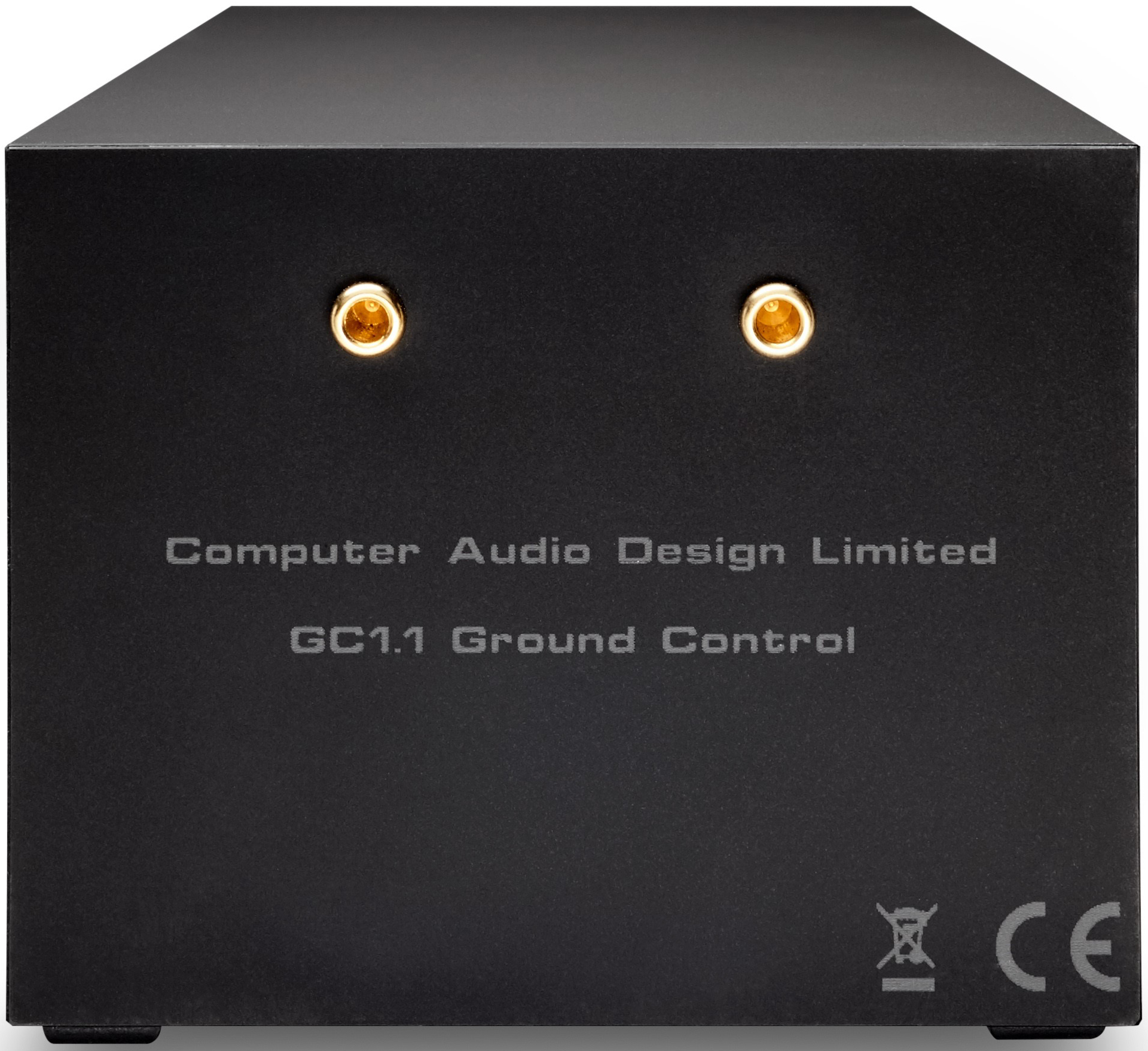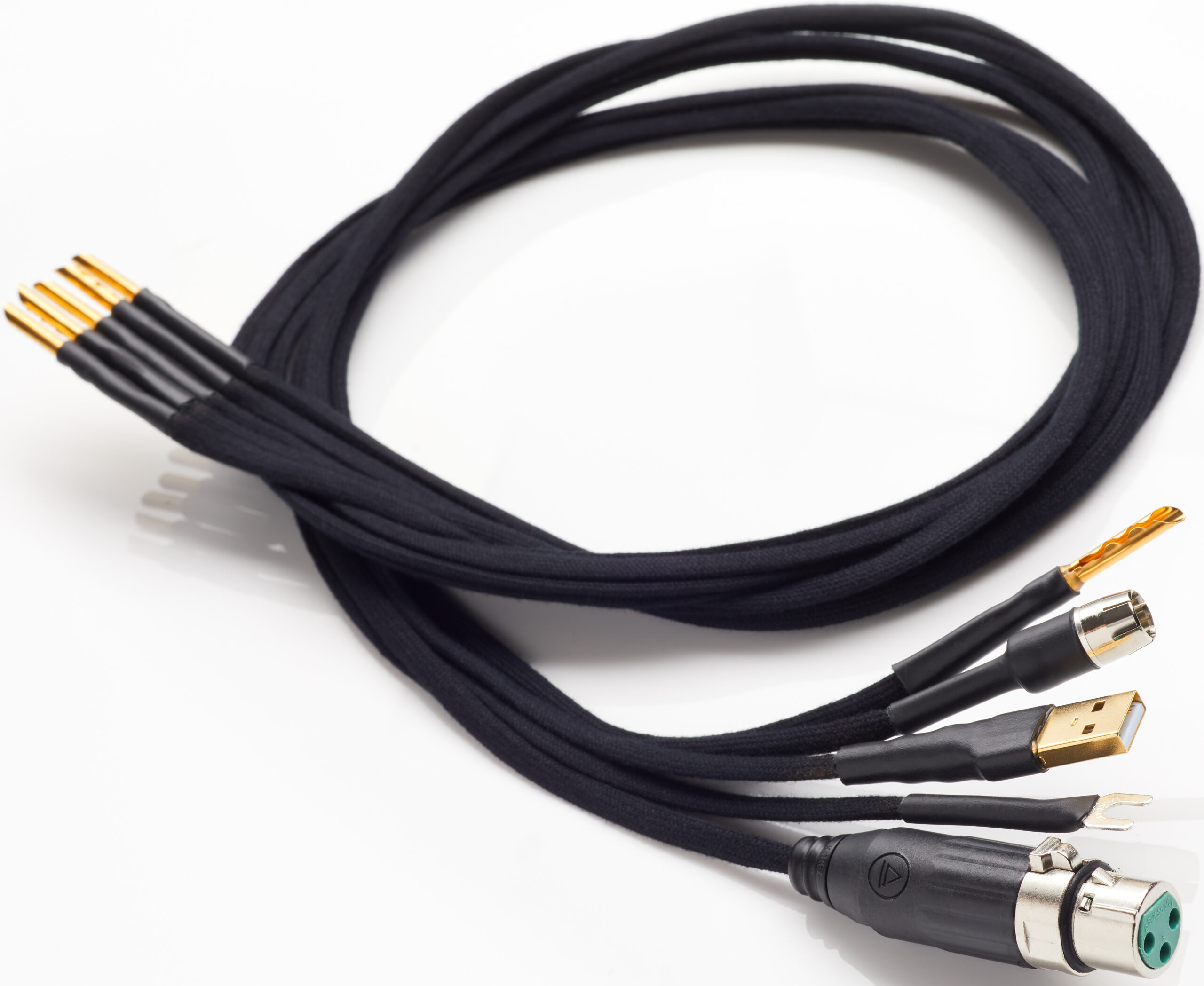Overall Impressions
My experience with the CAD Ground Controls convinced me that CAD, and perhaps others exploring similar phenomena, are onto something. It also confirmed that the effect of the CAD gear does vary depending on the piece of equipment connected to the Ground Control and which other pieces are connected at the same time. Different manufacturers perhaps “worry” about this problem more than others, such that it is less of an issue, or different equipment may be more or less susceptible.
What we heard at Timbre, while variable, was generally more dramatic than what I experienced at home. I also found that, for whatever reason, plugging multiple pieces of equipment into the CAD at the same time tended to bring about an excess of damping with my system. Excess damping is an issue that I have experienced in my system (and/or room) on occasion over the years, depending upon the gear in question or room treatments that I have experimented with. I do not recall noticing this issue at the demonstration at Timbre.
Even so, there were clear benefits to blending some of the CAD gear into the mix. The best results, to my ear, involved using the CAD gear with the mono block amplifiers. I intend to continue to experiment with the CAD gear on the preamplifier.
The following comments are grouped by the piece(s) of equipment that were plugged in at any one time to a Ground Control.
Control Section of Audio Note Preamp. We started our listening with the Bill Evans mentioned above, which was recorded live at the Village Vanguard. The sound without the CAD box was very satisfactory; indeed, this is one of the better XRCDs, in my view.
With the CAD connected, the immediate effect was of a quieter, blacker background; there was a noticeable increase in low-level detail. Although the effect was somewhat subtle, it seemed that increased detail in the high frequency range allowed for more certain placement of Paul Motian’s cymbals, as well as allowing Evans’ piano to pull back from the right-hand speaker and acquire more of a soundstage presence. One peculiarity was that we also noticed an increase in club noise of which there is, at times, a fair bit. Although this had the immediate effect of increasing the live feel of the recording, it became somewhat distracting at times.
While we lost some of the detail and the black background upon disconnecting the CAD, the sound was still quite good. We had an impression that, with the CAD, left to right imaging was improved but soundstage depth might have been somewhat better without the CAD. Again, the effect was subtle.
On the Amara Debussy piano recording, we noticed similar effects, particularly the quiet background and increased detail. I had not heard this recording before. It is one of the best piano recordings I’ve heard, with or without the CAD.
EMM Labs MTRX Amps. Next, we added connections to my EMM Labs MTRX amps and listened to the Debussy piano CD again. Doing so, we heard remarkable detail and absence of noise. Bass in particular was very detailed and also very large. Imaging was close to holographic and about as good as I can remember. Decay was excellent. The absence of noise was breathtaking.
Until this point, we had relied on digital, so we decided to switch to vinyl. The first record we played was U2’s Joshua Tree. On the introduction, the bass was particularly clear, clean, and deep. When instruments and then voice came in, there was minimal edge, less tizz, etc. Cymbals were very smooth and clean with no edge. Indeed, the lack of edge seemed a bit uncharacteristic of the recording, based upon previous experience. Space between songs was dead quiet. On the “Blue Sky” cut, the clarity was terrific, the soundstage very wide, yet the image edges were again somewhat soft. The top end was also slightly soft, though seductive. Vinyl noise was almost totally absent. Bass was very large and detailed. I heard synth bass that that I did not know was there, but a bit of the visceral impact seemed to be missing. This was one of the times in my evaluation when I wondered whether I had effectively dialed in a bit more damping than I like.
The Haitink Stravinsky Petrouchka LP came next. It had amazing detail and breadth. It was so quiet that it was easy to misjudge volume. Center fill and depth were exceptional. Strings were again seductive. The top was a little soft, suggesting perhaps a bit of damping, but the listening experience was nevertheless quite satisfying.
All further listening was with the amps connected to the CAD Ground Control 3.1 unless otherwise noted.
EMM Labs DA2 and Transport. Let me cut to the chase here. After repeatedly listening to the effects of connecting and disconnecting the ground to the DA2, I concluded that adding the ground consistently caused some damping of dynamic range and some veiling, both of which were not sufficiently offset by noise reduction. This was entirely unexpected given what I had heard at Timbre. In this instance the digital components were connected to the Ground Control 1.1 using the RS 232 connectors on each and the amps to the 3.1., also using the RS232 connector on each amp.
Grounding the transport resulted in some damping as well, but somewhat less than had occurred with the DA2.
The decision point moving forward was to leave the ground connections to the amps and the preamp but nothing else.
HB Cable Design PowerSlave Marble Power Distribution Box. My frontend components are plugged into a HB Cable Design PowerSlave Marble AC distribution box. CAD provided a ground connection for the distribution box, which I connected to a Ground Control 3.1. The effect was much more pronounced than it had been with either of the digital pieces. On the Bill Evans, the piano and bass moved back from the plane of the speakers, which gave a much more realistic feeling of being in a club. Curiously, the background noise of the club (glasses clinking and low-level voices) became both more prominent and more coherent. Disconnecting the ground made the piano sound thinner. Switching to The Yes Album on MoFi (digital), bass seemed more prominent, perhaps too much so. At this point, it was getting late, so we called it a night.
At a later listening session, it was clear that connecting the power strip to the Ground Control affected the sound. Noise level was noticeably lower, which enhanced retrieval of low-level detail but with some damping. While there were pluses and minuses either way, we decided to move forward with the power strip not connected to the Ground Control.
Audio Note UK M9 (RIAA) phono stage. With the ground connected to the Ground Control 3.1, the image moved toward the center and the bass drum sounded somewhat damped with less presence. Synth bass was phenomenal in either configuration. Final decision was not to ground the phono stage. With the ground disconnected, the stage opened up and the bass drum had more presence and treble had more energy.
Audio Note Step Up Transformer. Here the results were remarkably similar to those with the phono stage.
Some final listening
Back to power strip and listening to the Weather Report LP, 1st cut side 2, the recording presents a sound that is empty and wide like a desert, with even a wind sound in background; an incredibly wide soundstage. With ground in, we definitely lost some air and space, the soundstage becoming mildly damped, such that it did not flow as well from side to side.
As an experiment, we unplugged the ground from the preamp. Now the soundstage became flatter but with more apparent presence — it was perhaps more visceral.
With the ground plugged back in, space deepened and it seemed easier to pick out instruments. While there was perhaps a little damping, there were clearly more positives than negatives. On the last tune on the side, we tried the power strip again. It sounded more alive without the ground, more open. It’s the iteration that is probably going too far.
Conclusions
This review was more complicated than most because the combination of grounds connected at any one time could impact the sonic results. In every instance, connecting an additional ground lowered the noise floor and made the background blacker; however, some combinations could dampen dynamic range and slightly soften the top end. Grounding my EMM Labs amps seemed to have significant upside and little or no discernible downside. I purchased the Ground Control (3.1) and three of the grounding wires.
In closing, I highly recommend these products but want to stress that a potential buyer should borrow a unit from their dealer and try various grounding schemes in their own system. In the iterative process of adding grounding to additional pieces of gear, there was (in my system) a danger of also bringing about a damping effect, which seemed to cause piano tone to take on a uniformity and slight blandness that made for a less satisfying listening experience. Leaving the amps plugged into the CAD Ground Plane seemed to give us all the positives that the CAD can offer (reduction of noise, more holographic imaging, better low-level detail, blacker background) and none of the damping.
In all fairness, I should note that my system is complex and highly revealing of changes. I have spoken a number of times with the manufacturer and he feels strongly that what I heard at Timbre was much more typical.
Highly recommended that you borrow a unit from your dealer and try various grounding combinations in your system.
Copy editor: Dan Rubin
- ← Previous page
- (Page 2 of 2)




